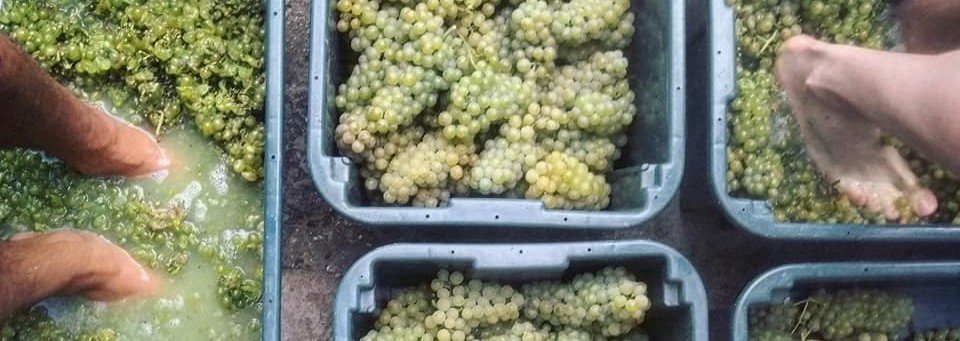

Vaskapu Kastély, Pécs, Hungary
We like to make wines wich are easy to drink, easy to enjoy, and express the „genius loci” of these southern Hungarian area, where Hungarians live together with Schwabisch and Balcanian ethnicities.

At a Glance
2018
https://www.facebook.com/vaskapukastely
Pécs
Humid Continental
Volcanic bedrock, loess, clay, and forest loam
80m-200m
Bordered by the Danube and the Mecsek Mountain
Kadarka, Cabernet sauvigon, Merlot, Hárslevelű
2.5 hectares
Biodynamic
Natural
https://www.facebook.com/vaskapukastely
Pécs
Humid Continental
Volcanic bedrock, loess, clay, and forest loam
80m-200m
Bordered by the Danube and the Mecsek Mountain
Kadarka, Cabernet sauvigon, Merlot, Hárslevelű
2.5 hectares
Biodynamic
Natural
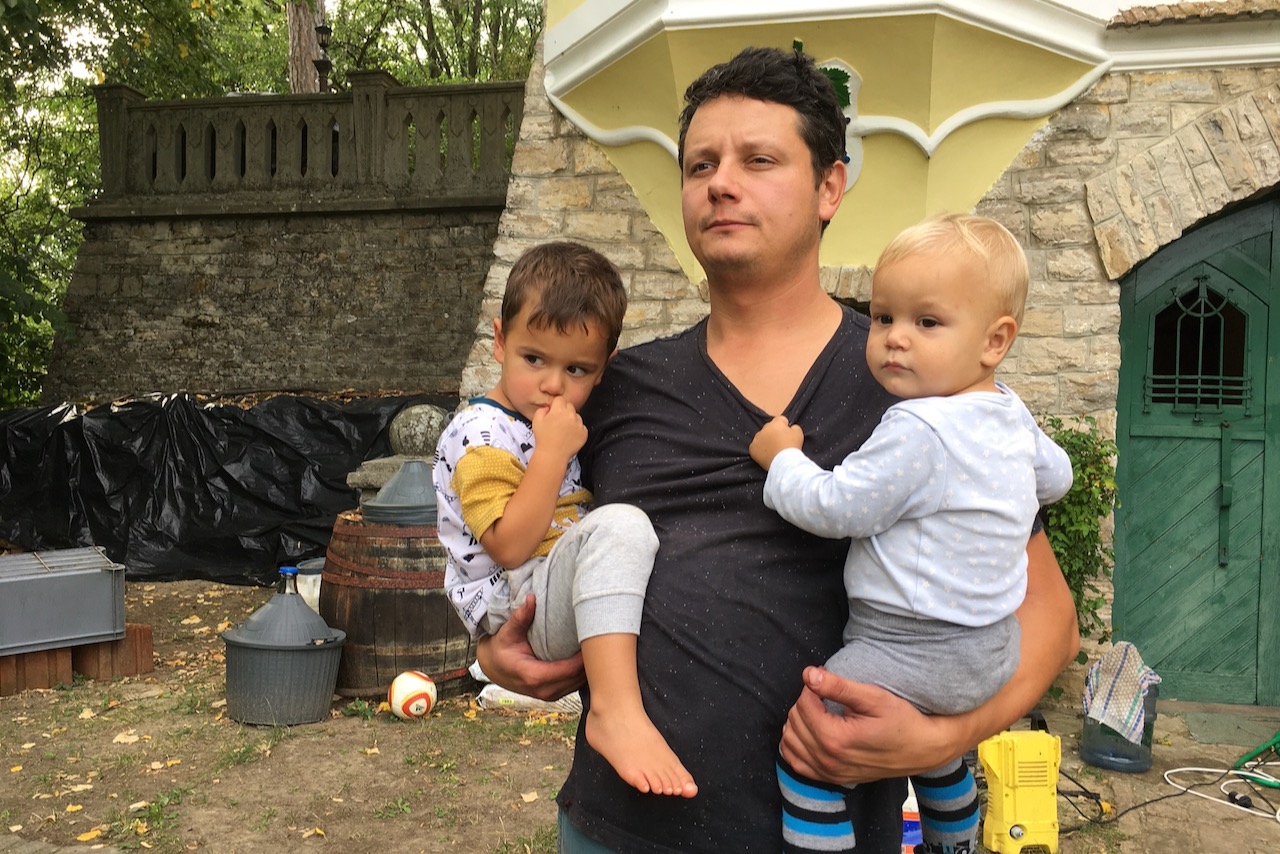
Géza Galán and his boys
The Region
I first visited Pécs in 2015 to seek out its modern calling card grape Cirfandli (aka Zierfandler). We had also just missed the Mohács festival (Busójárás) which is based on the Šokci people saying good-bye to winter while wearing scary wooden masks, wooly white fur costumes and burning a massive coffin. In any case, we never pulled the trigger on any Cirfandli, but the city and region made a distinct impression.

Széchenyi Square in Pécs
As soon as you enter Széchenyi Square in Pécs, there’s the immediate sense of Churches turned into Mosques turned back into Churches. There are Roman ruins, a 4th century Christian necropolis (UNESCO World Heritage Site in 2000), 16th Century Ottoman Mosques, Minarets, Turkish baths, Synagogues, and although I haven’t seen it, apparently a museum that has the heart of Sultan Suleiman I.
About 40 min east of Pécs is the city of Mohács. For Hungarians, the Battle of Mohács in 1526 is perhaps the Kingdom of Hungary’s most painful historical scar. I won’t go into too much detail here, but it resulted in 150 years of Ottoman rule. It’s far more complicated and devastating, but on the bright side of things, the region became a cultural melting pot that has survived it all to become something really special today. Pécs was the European Capital of Culture in 2010 and its motto is "The Borderless City." You can see, hear and taste the influences of the Serbs, Croats, Germans, Romanians, Greeks, Hungarians and of course the aforementioned Turks.
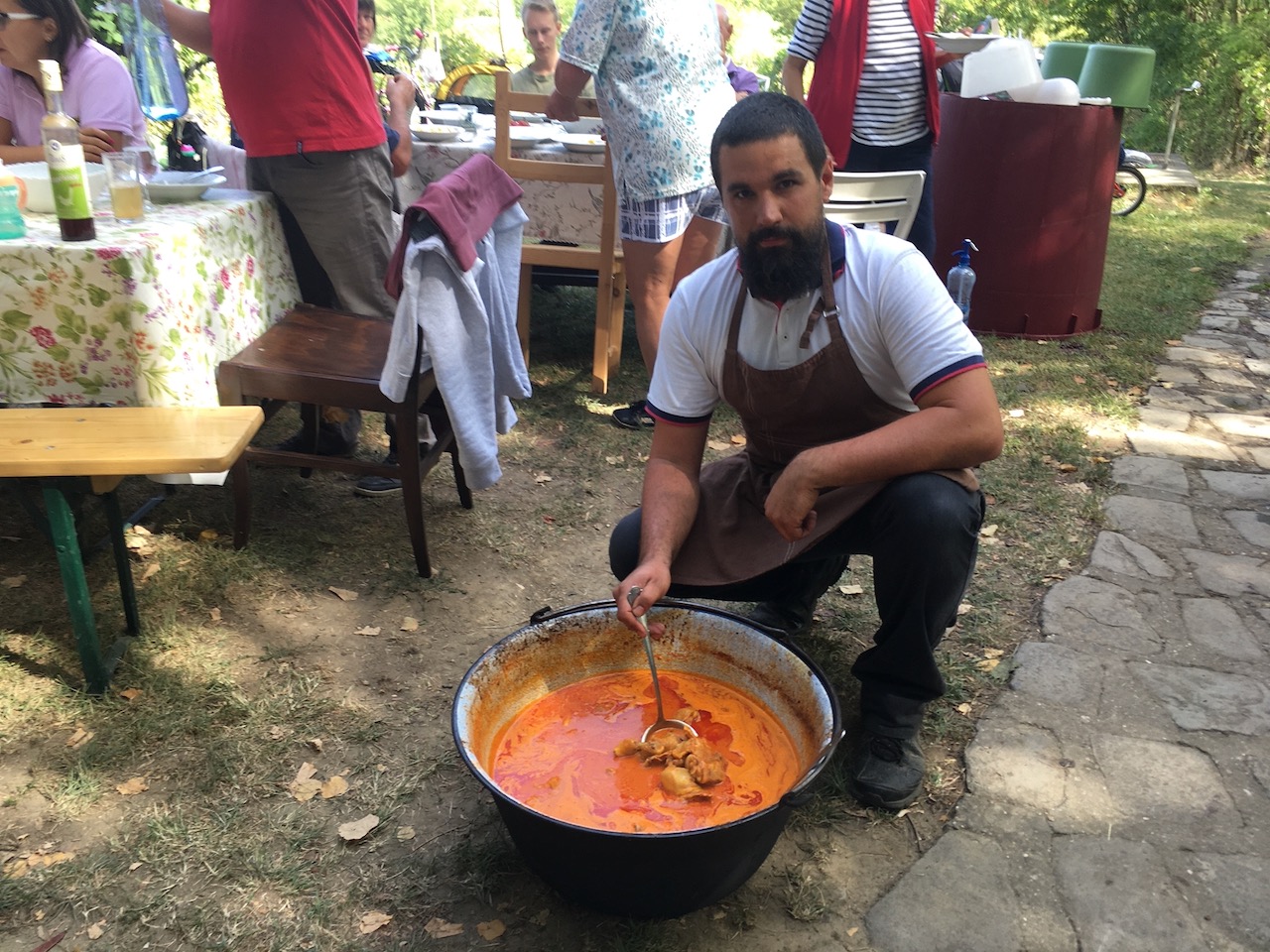
Cooking Goulash at the Vaskapu Kastély Winery
Beneath the city is another layer of history and tradition - over 50 kilometers of cellar leading to some 1300 cellar doors. This area has been on the wine route for over 3000 years and from at least 1694, the county’s coat of arms had wine grapes on it. Despite all of this, this area has remained very much under the radar for us in terms of wine. We’ve spent far more time in neighboring Szekszárd, Villány and across the Danube in Hajós-Baja. Hopefully we start changing that with the inaugural commercial vintage from Géza Galán. And to the best of our knowledge, these will also be inaugural wines from Mohács to reach the United States.

Széchenyi Square in Pécs
As soon as you enter Széchenyi Square in Pécs, there’s the immediate sense of Churches turned into Mosques turned back into Churches. There are Roman ruins, a 4th century Christian necropolis (UNESCO World Heritage Site in 2000), 16th Century Ottoman Mosques, Minarets, Turkish baths, Synagogues, and although I haven’t seen it, apparently a museum that has the heart of Sultan Suleiman I.
About 40 min east of Pécs is the city of Mohács. For Hungarians, the Battle of Mohács in 1526 is perhaps the Kingdom of Hungary’s most painful historical scar. I won’t go into too much detail here, but it resulted in 150 years of Ottoman rule. It’s far more complicated and devastating, but on the bright side of things, the region became a cultural melting pot that has survived it all to become something really special today. Pécs was the European Capital of Culture in 2010 and its motto is "The Borderless City." You can see, hear and taste the influences of the Serbs, Croats, Germans, Romanians, Greeks, Hungarians and of course the aforementioned Turks.

Cooking Goulash at the Vaskapu Kastély Winery
Beneath the city is another layer of history and tradition - over 50 kilometers of cellar leading to some 1300 cellar doors. This area has been on the wine route for over 3000 years and from at least 1694, the county’s coat of arms had wine grapes on it. Despite all of this, this area has remained very much under the radar for us in terms of wine. We’ve spent far more time in neighboring Szekszárd, Villány and across the Danube in Hajós-Baja. Hopefully we start changing that with the inaugural commercial vintage from Géza Galán. And to the best of our knowledge, these will also be inaugural wines from Mohács to reach the United States.

Vaskapu labels
The People
While Géza is not originally from the area, his wife Ibolya has her roots in Lánycsók (A girl’s kiss), which is a small village a stone’s throw from Mohács. In 2015 he started making a little hobby wine in a small cellar that quickly turned into an obsession. Three years later they made a leap of faith by buying the Vaskapu Kastély (Iron Gate Castle) in Mohács that entailed a house, cellar and vineyards. For the past 30 years an Alsatian couple had run everything but were fast approaching retirement and needed to sell.
The Alsatians had kept 2.5 hectares of native grapes like Kadarka and Hárslevelű thriving among others, most of which were planted in the early 1990s. Géza wrote to me that he wants his wines to express the “Genius loci” of Southern Hungary. Genius Loci basically translates to the protective spirit of a place which is an angle of terroir I hadn’t really thought about before. The spirit of the place in his mind are wines of celebration and community.
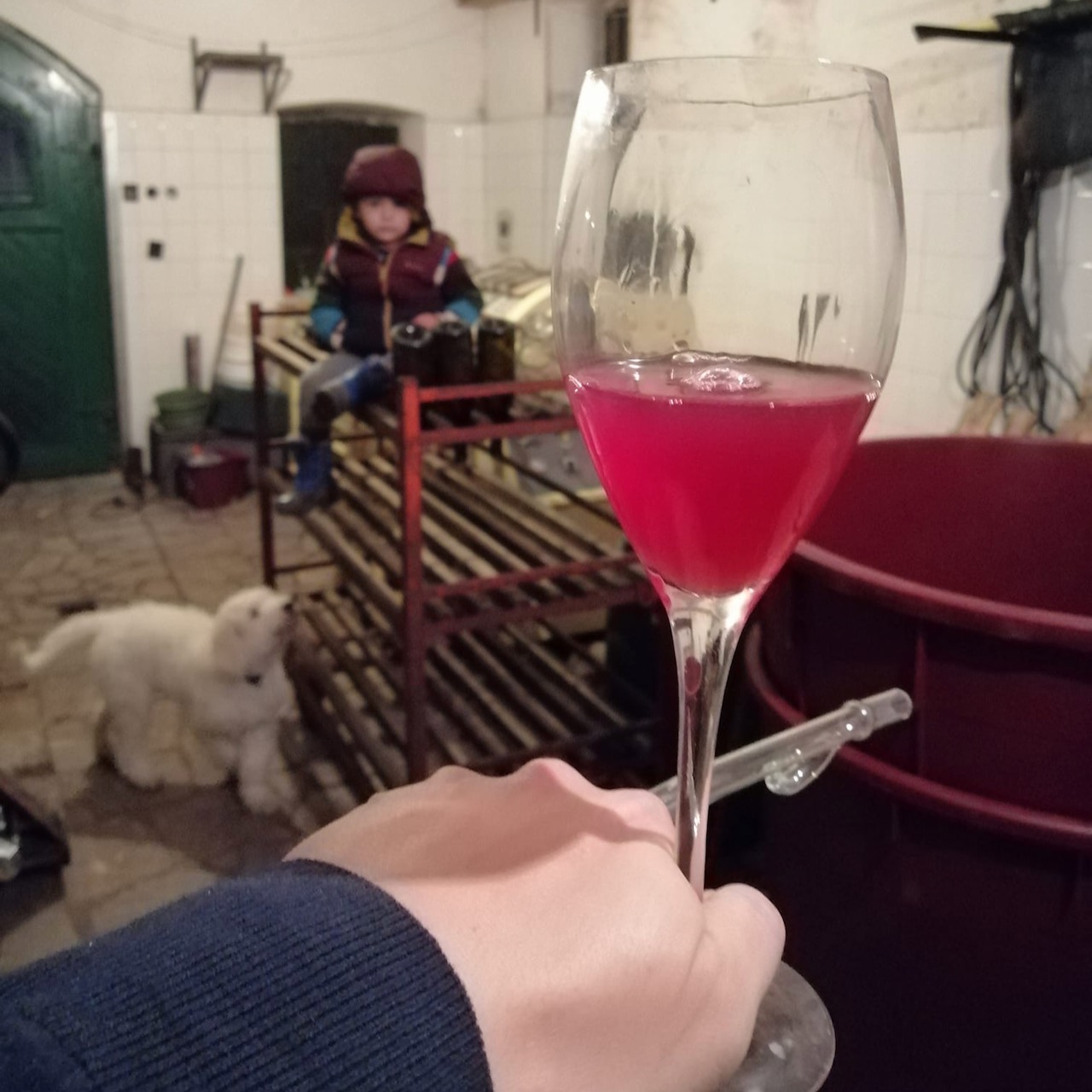
Tasting fresh Kadarka at Vaskapu
In order to do this, farming biodynamically and low intervention in the cellar are the means to this end. He also has two sons, Gáspár 3, and Zsigmond 2, who are ever present at the winery and in the vineyards. This is the kind of family that encapsulates the best of the new generation of growers in Hungary. They are farming and making wine that has long term family legacy in mind in both the health of the soil, the wines, and celebrating the culture and history of the area. According to Géza, “For me winemaking is life, it is the harmony between the human and nature, the responsibility for sustainability and our smaller societies.”
The Alsatians had kept 2.5 hectares of native grapes like Kadarka and Hárslevelű thriving among others, most of which were planted in the early 1990s. Géza wrote to me that he wants his wines to express the “Genius loci” of Southern Hungary. Genius Loci basically translates to the protective spirit of a place which is an angle of terroir I hadn’t really thought about before. The spirit of the place in his mind are wines of celebration and community.

Tasting fresh Kadarka at Vaskapu
In order to do this, farming biodynamically and low intervention in the cellar are the means to this end. He also has two sons, Gáspár 3, and Zsigmond 2, who are ever present at the winery and in the vineyards. This is the kind of family that encapsulates the best of the new generation of growers in Hungary. They are farming and making wine that has long term family legacy in mind in both the health of the soil, the wines, and celebrating the culture and history of the area. According to Géza, “For me winemaking is life, it is the harmony between the human and nature, the responsibility for sustainability and our smaller societies.”
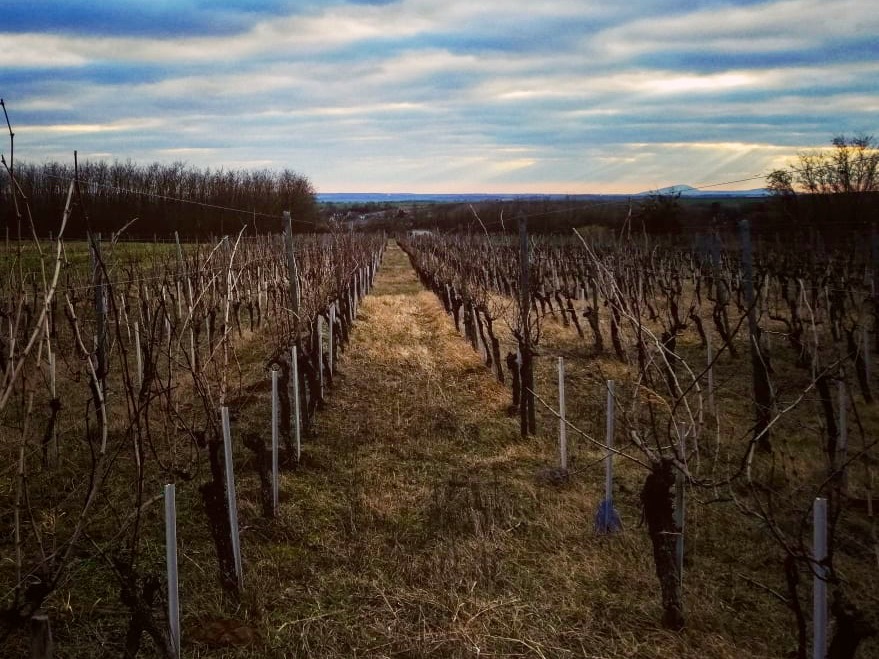
Vaskapu vineyard
Vineyards
The Pannon wine region is comprised of four appellations: Tolna, Villány, Szekszárd and Pécs. All of which are all south of Budapest, west of the Danube, and just above the Croatian and Serbian borders. Post phylloxera, Pécs was known as Pécs-Villány, after 1940 it was the Mecsek Wine Region, after 1977 it switched to Mecsekalja Wine Region, and then in 2009 it was finally narrowed down to just Pécs. A classic Hungarian bureaucratic scenic route in attempting to define a wine region. Amazingly, despite 7000 hectares of classified vineyard land, only 700 hectares are currently under vine and even less are commercially cultivated.
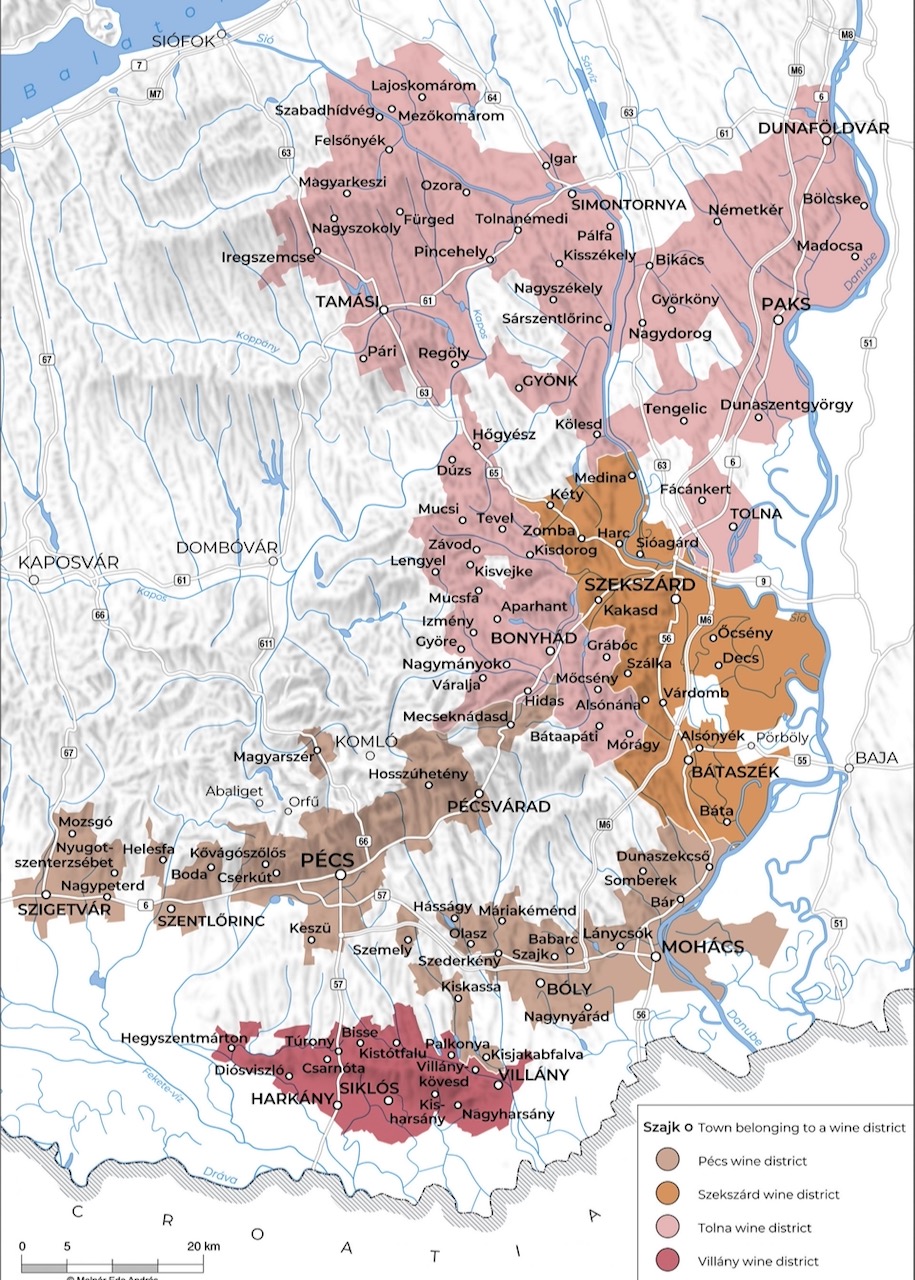
Map of Pannon wine districts
The most important things to know are the sub Mediterranean climate, cool and constant breezes from the Danube, and the protective shelter of Mecsek Mountain. This all culminates in a long, healthy, and warm growing season and little to no risk of frost. See also great conditions for organic/biodynamic viticulture.
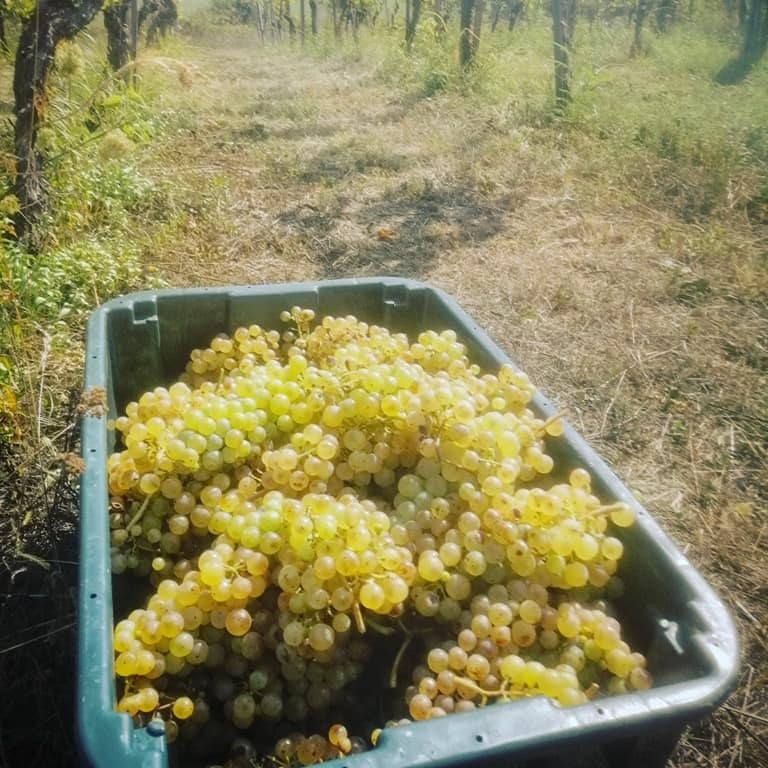
Hárslevelű grapes
The bedrock is volcanic, but it’s the loess, clay, forest loam, and extremely high lime content that drives the structure of the wines. Historically, and attempting to emulate Tokaj, Furmint and Hárslevelű were both planted although the climate was never suitable to botrytis. Other traditional grapes included Kadarka, Olaszrizling, Traminer, Sárgamuskotály, and later Királyleányka. During the early 1830s Cirfandli came in from Austria and became immensely popular. Despite Phylloxera destroying upwards of 80% of vineyards, Cirfandli remains a calling card white today for the appellation, and given the climate, reds like Kékfrankos, Cabernet Franc, Pinot Noir, and Merlot have taken hold since the early 1990s.
Géza’s 2.5 hectares encompass a mix of the past and present. Everything is farmed according to biodynamic principles including no tilling and organic spraying is kept to a minimum. There’s one hectare each of Kadarka and Cabernet Sauvignon and the rest is a mix of Hárslevelű, Merlot and Cabernet Franc. He’s working on new plantings of Kadarka, Kékfrankos, Olaszrizling and Rajnai (Rhine) Rizling.

Kadarka grape
Géza also purchases some organically farmed Grüner Veltliner from Mohács and some Biodynamically farmed Kékfrankos from Szekszárd. 2019 is his first commercial vintage at just under four thousand bottles in total production.

Map of Pannon wine districts
The most important things to know are the sub Mediterranean climate, cool and constant breezes from the Danube, and the protective shelter of Mecsek Mountain. This all culminates in a long, healthy, and warm growing season and little to no risk of frost. See also great conditions for organic/biodynamic viticulture.

Hárslevelű grapes
The bedrock is volcanic, but it’s the loess, clay, forest loam, and extremely high lime content that drives the structure of the wines. Historically, and attempting to emulate Tokaj, Furmint and Hárslevelű were both planted although the climate was never suitable to botrytis. Other traditional grapes included Kadarka, Olaszrizling, Traminer, Sárgamuskotály, and later Királyleányka. During the early 1830s Cirfandli came in from Austria and became immensely popular. Despite Phylloxera destroying upwards of 80% of vineyards, Cirfandli remains a calling card white today for the appellation, and given the climate, reds like Kékfrankos, Cabernet Franc, Pinot Noir, and Merlot have taken hold since the early 1990s.
Géza’s 2.5 hectares encompass a mix of the past and present. Everything is farmed according to biodynamic principles including no tilling and organic spraying is kept to a minimum. There’s one hectare each of Kadarka and Cabernet Sauvignon and the rest is a mix of Hárslevelű, Merlot and Cabernet Franc. He’s working on new plantings of Kadarka, Kékfrankos, Olaszrizling and Rajnai (Rhine) Rizling.

Kadarka grape
Géza also purchases some organically farmed Grüner Veltliner from Mohács and some Biodynamically farmed Kékfrankos from Szekszárd. 2019 is his first commercial vintage at just under four thousand bottles in total production.
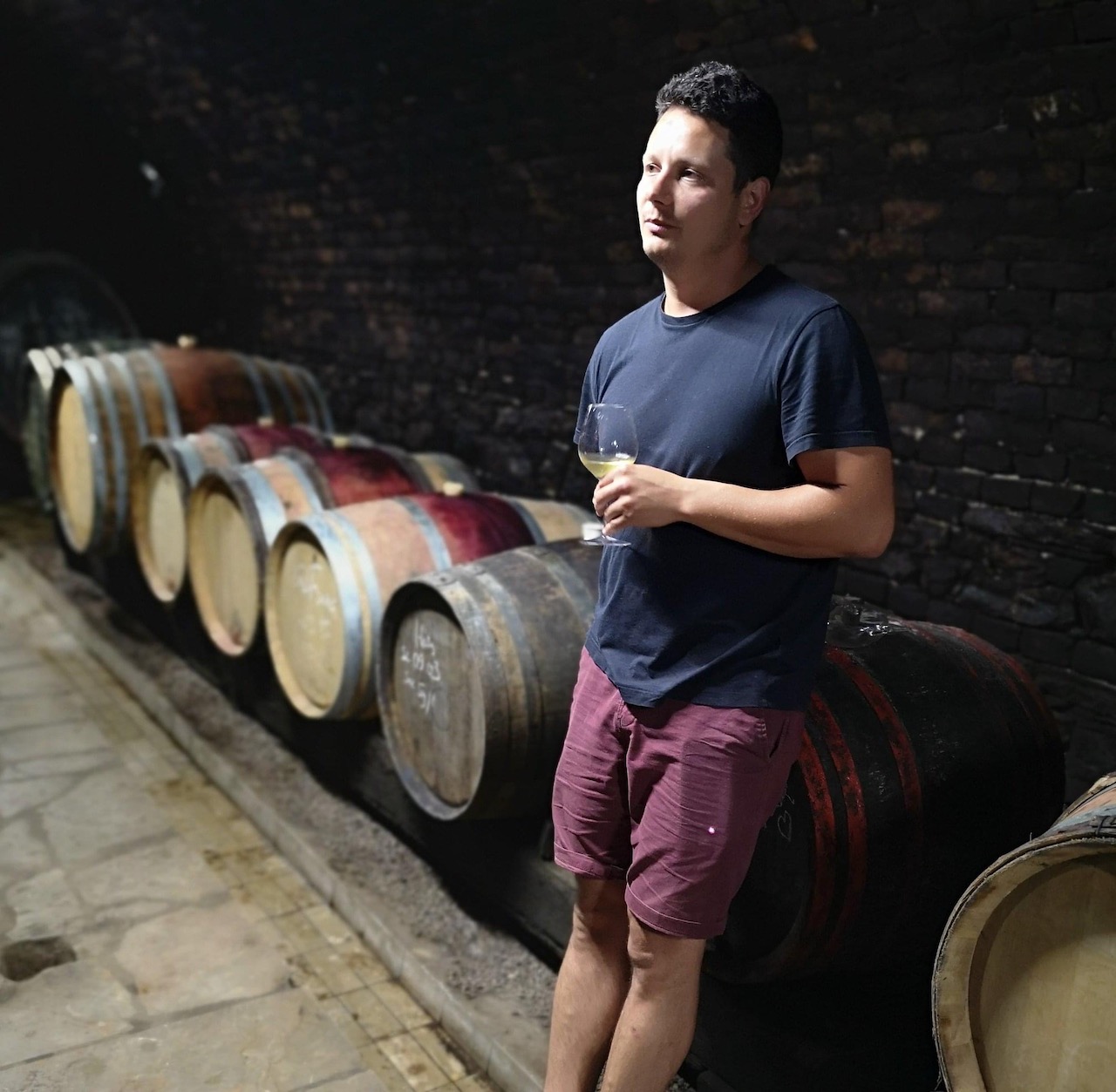
Géza in the cellar
Winemaking
Géza has been following, visiting, tasting and gaining a lot of inspiration from the natural wine movements in both Slovakia and Austria. Organic and or Biodynamic viticulture is paramount, and in the cellar everything is done by hand. Relying mostly on hand destemmed and whole cluster spontaneous fermentation, zero machinery, and gravity, they use a mix of Hungarian and French oak and some steel (mostly for settling/aging). Bottled unfined/unfiltered, there are zero additions apart from 10-20 ppm of SO2 at bottling and many wines are without any. The 2020 vintage is completely without additions.
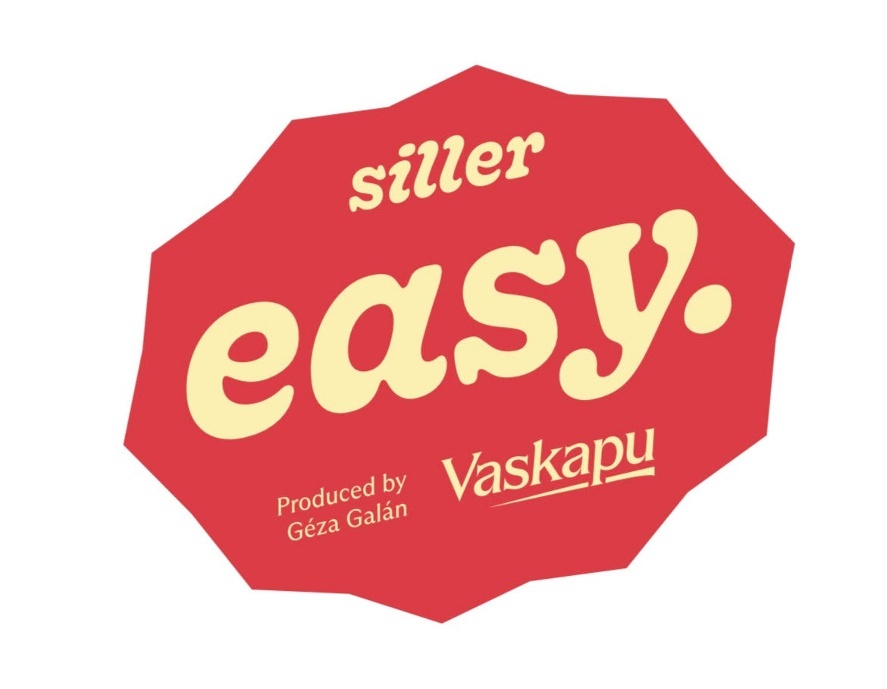
Red Wine , Organic
Merlot; Kékfrankos;
13.6%
7.7 g/l
5.6 g/l
Merlot; Kékfrankos;
13.6%
7.7 g/l
5.6 g/l
We are always on the lookout for Siller. Not highly regulated and with many means to achieve the end result, it’s essentially where white wine acidity and aromatics hits red wine structure and fruit. Color wise, somewhere in between a light red and a darker rosé. Historically found along the Danube throughout Central and Eastern Europe, it’s something that has survived occupations, wars, and communism and is on somewhat of a comeback. The Vaskpapu interpretation begins with destemmed Merlot direct pressed into tank blended with semi-carbonic (4-5 days maceration) Kékfrankos from nearby Szekzárd. 90% Merlot with just 10% of the Kékfrankos, it has an vibrant color without being overly carbonic, and plenty of fruit in concert with the acidity. With a little added SO2 to help clear the must, it’s bottled unfined and unfiltered. On our last visit, Géza had a beautifully prepared Halászle (Fisherman’s stew) for lunch. The Siller was perfectly suited for a hearty fishy broth with ample paprika.
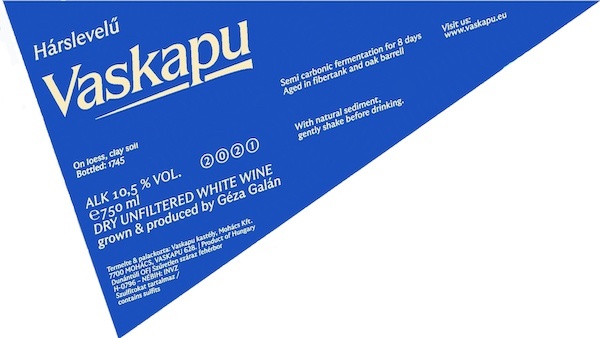
White Wine , Organic
Hárslevelű;
12.4%
1 g/l
7 g/l
Hárslevelű;
12.4%
1 g/l
7 g/l
Only 297 bottles were produced, so we only have a few cases. Just the same, it’s a symbol of things to come down the road so we want to keep tabs and see how it ages. This is 100% direct pressed Hárslevelű fermented and aged in 228 liter French oak. Super focused, pure, raw and oak is more rounding than flavor. This is a completely new way to look at Hárslevelű while complementing the versions we have from Tokaj, Mátra, Somló and Lake Balaton.
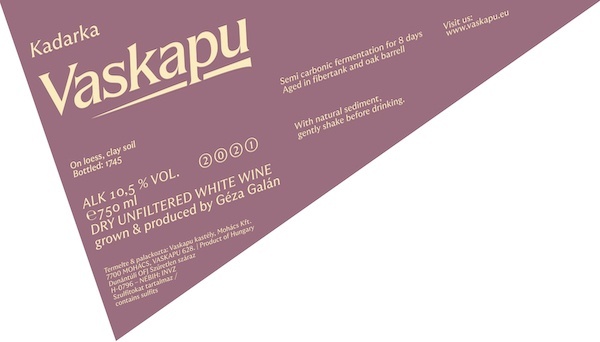
Red Wine , Organic
Kadarka; Grenache;
12.4%
1 g/l
6.8 g/l
Kadarka; Grenache;
12.4%
1 g/l
6.8 g/l
6 different clones of Kadarka were planted on the Jenyei Hill in the early 1990s. This area was already well known for Kadarka in the 19th Century and is the backbone of Géza’s 2.5 hectares. 40% was whole cluster, 30% whole berry (hand destemmed), and the rest was trodden for juice to keep it covered and healthy. Relying on pump-overs, it spent 10 days in this partial “hamburger method” until being put into oak, stainless steel and fiber tank on the lees. No racking, bottled unfined and unfiltered with zero additions. This is pure Kadarka. Spicy, aromatic, acid driven, pungent and impossibly refreshing.
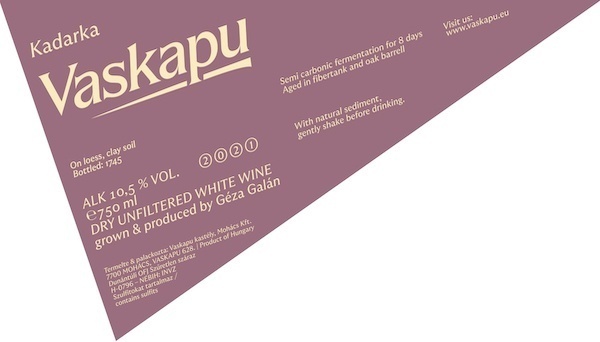
Red Wine , Organic
Kadarka; Grenache;
12.8%
Kadarka; Grenache;
12.8%
6 different clones of Kadarka were planted on the Jenyei Hill in the early 1990s. This area was already well known for Kadarka in the 19th Century and is the backbone of Géza’s 2.5 hectares. 40% was whole cluster, 30% whole berry (hand destemmed), and the rest was trodden for juice to keep it covered and healthy. Relying on pump-overs, it spent 10 days in this partial “hamburger method” until being put into oak, stainless steel and fiber tank on the lees. No racking, bottled unfined and unfiltered with zero additions. This is pure Kadarka. Spicy, aromatic, acid driven, pungent and impossibly refreshing.
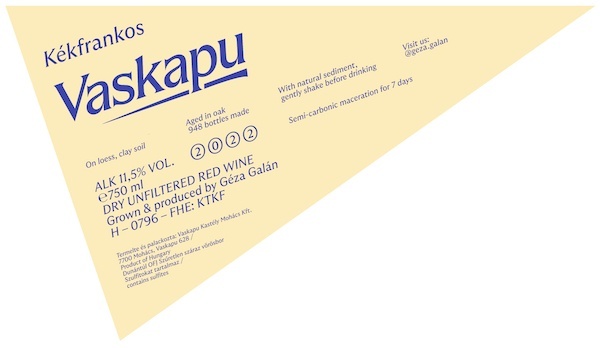
Red Wine , Organic
Kékfrankos;
12.8%
Kékfrankos;
12.8%
This fruit actually comes from the Bátaszék vineyard in the neighboring appellation of Szekszárd. Planted in the 1990s it’s been organically farmed since the beginning. A rare creature given the historical timing. A good amount of this was already direct pressed for the Easy Liter, but this single bottling is much different. It’s two different harvests made by two different methods. The first harvest is whole cluster pressed (some semi-carbonic) and macerated for a week. 10 days later, the second harvest pass was 30% hand destemmed (whole berry) fermenting in the other 70% of direct press. Fermented in two different barrels, they were then blended and bottled unfiltered with zero additions.
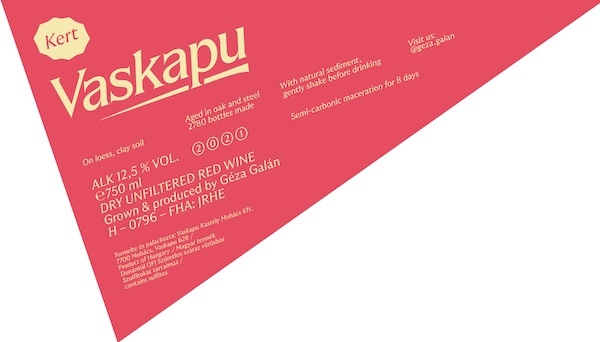
Red Wine , Organic
Cabernet Sauvignon; Merlot; Cabernet Franc; Kékfrankos;
12.6%
1.2 g/l
6.7 g/l
Cabernet Sauvignon; Merlot; Cabernet Franc; Kékfrankos;
12.6%
1.2 g/l
6.7 g/l
Kert translates to “garden,” so this is basically a “Gemischter Satz” with a little extra for good measure. 60% is 10 day whole cluster semi-carbonic Kékfrankos blended with 35% Cabernet Sauvignon and Merlot which are both open vat fermented for 12 days. The final 5% is direct pressed Kadarka and Hárslevelű. This has more grip than the previous vintage, but the aromatic lift from the Kadarka and Hárslevelű make it more of a crunchy grip than a drying one. The final blend was aged in fibertank and oak barrels for 8 months. Bottled unfiltered, unclarified and without added SO2. 2780 bottles produced.
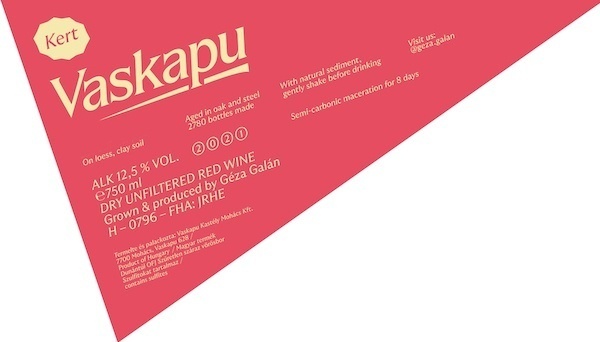
Red Wine , Organic
Cabernet Sauvignon; Merlot; Kékfrankos; Kadarka; Hárslevelű;
12.7%
0.7 g/l
6.6 g/l
Cabernet Sauvignon; Merlot; Kékfrankos; Kadarka; Hárslevelű;
12.7%
0.7 g/l
6.6 g/l
Kert translates to “garden,” so this is basically a “Gemischter Satz” with a little extra for good measure. 60% is 10 day whole cluster semi-carbonic Kékfrankos blended with 35% Cabernet Sauvignon and Merlot which are both open vat fermented for 12 days. The final 5% is direct pressed Kadarka and Hárslevelű which adds a nice aromatic lift to the crunchy grip. The final blend was aged in fibertank and oak barrels for 8 months. Bottled unfiltered, unclarified and without added SO2.
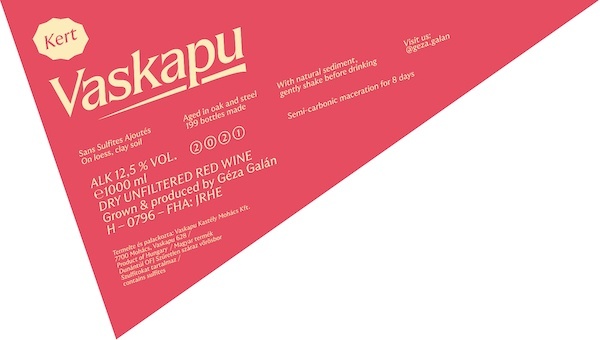
Red Wine , Organic
Cabernet Sauvignon; Kékfrankos; Cabernet Sauvignon; Merlot;
12.6%
1.2 g/l
6.7 g/l
Cabernet Sauvignon; Kékfrankos; Cabernet Sauvignon; Merlot;
12.6%
1.2 g/l
6.7 g/l
Kert translates to “garden,” so this is basically a “Gemischter Satz” with a little extra for good measure. 60% is 10 day whole cluster semi-carbonic Kékfrankos blended with 35% Cabernet Sauvignon and Merlot which are both open vat fermented for 12 days. The final 5% is direct pressed Kadarka and Hárslevelű. This has more grip than the previous vintage, but the aromatic lift from the Kadarka and Hárslevelű make it more of a crunchy grip than a drying one. The final blend was aged in fibertank and oak barrels for 8 months. Bottled unfiltered, unclarified and without added SO2. 2780 bottles produced.
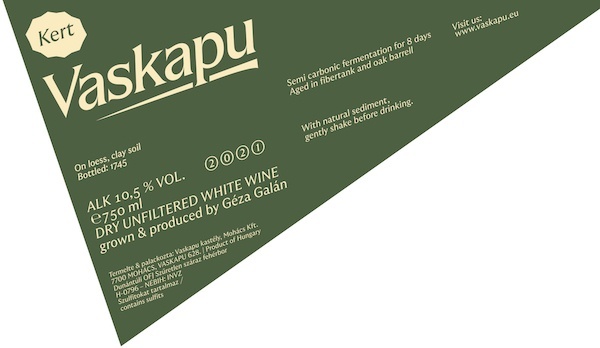
White Wine , Organic
various;
11.9%
3.3 g/l
5.9 g/l
various;
11.9%
3.3 g/l
5.9 g/l
This is essentially a “Gemischter Satz” mostly consisting of Királyleányka, Rajnai Rizling, and Chardonnay along with some Olaszrizling from the nearby village of Lánycsók. “Kert” translates to “Garden.” The Rajnai and Olaszrizling get 3 days on the skins in open vats while the rest get 50% semi-carbonic for 8 days, 50% direct press in both oak and fibertank. Géza made some homemade Harcsapaprikás túrós csuszával (local fish in a paprika fresh cheese/sour cream sauce with bacon and pasta) on our last visit and the Kert White was a killer companion. Bottled unfiltered with zero additions. 1745 bottles were produced.